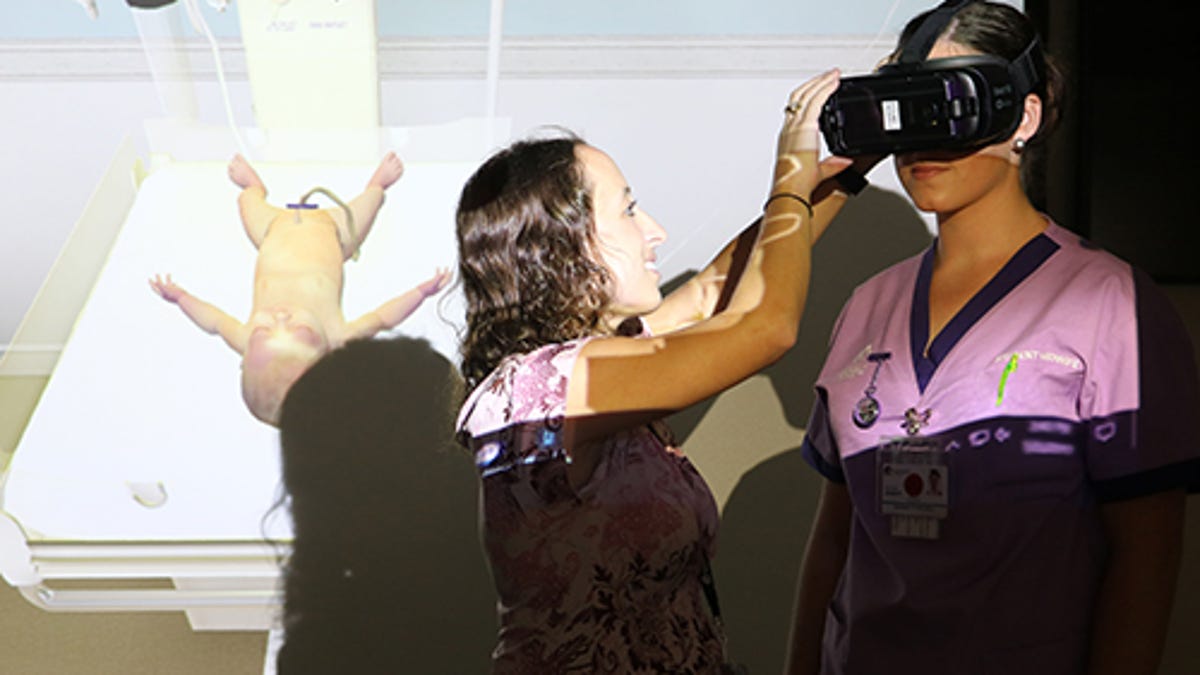VR is now helping teach midwives to deliver babies
A new project will allow aspiring midwives at the University of Newcastle to deliver babies in a virtual environment.

Midwifery students now have to deliver babies as part of exams at Australia's University of Newcastle -- but they will do it in virtual reality .
The Australia's University of Newcastle has begun a VR project that simulates a real-world delivery room. The program, which runs on PC, iOS and Android, puts midwifery students under the pressure of a "life-or-death situation" in the "safe, repeatable environment of VR," said co-project leader and lecturer, Jessica Williams, in a statement.
The program is designed to ease the transition from an educational setting to a real-world emergency room for new graduates and boost their confidence at work, which is important because "15 percent of births in Australia and New Zealand [require] some form of resuscitation."
In an email to CNET, Williams expressed optimism about the project. "We have demonstrated our app to our clinical partners and neonatologists, who see great value in using VR in teaching and learning when it comes to medical emergency situations," she said.
Incorporating VR into midwifery training could prove useful in improving maternal and infant mortality rates and other consequences caused by medical error. According to a May 2016 letter from John Hopkins Medicine to the US Centers for Disease Control and Prevention (CDC), the number of maternal deaths due to medical error stands at 251,545.
The University of Newcastle is not the only institution to use new tech in clinical training. At CommunicAsia this week, Singapore's Infocomm Media Development Authority (IMDA) announced a collaboration with Tan Tock Seng Hospital and visual effects company SideFX Studios to simulate scenarios in VR for training courses on medical procedures.
How much VR could help in healthcare training overall remains to be seen, however. IMDA's project will see VR being used to complement traditional methods of clinical training, because current technology is unable to "fully replicate a number of different qualities" including tactile responses and other unpredictable conditions.
First published May 25, 10:08 p.m. PT.
Update, 11:58 p.m.: Added comment from University of Newcastle.
Solving for XX: The industry seeks to overcome outdated ideas about "women in tech."
Life, disrupted: In Europe, millions of refugees are still searching for a safe place to settle. Tech should be part of the solution. But is it?

